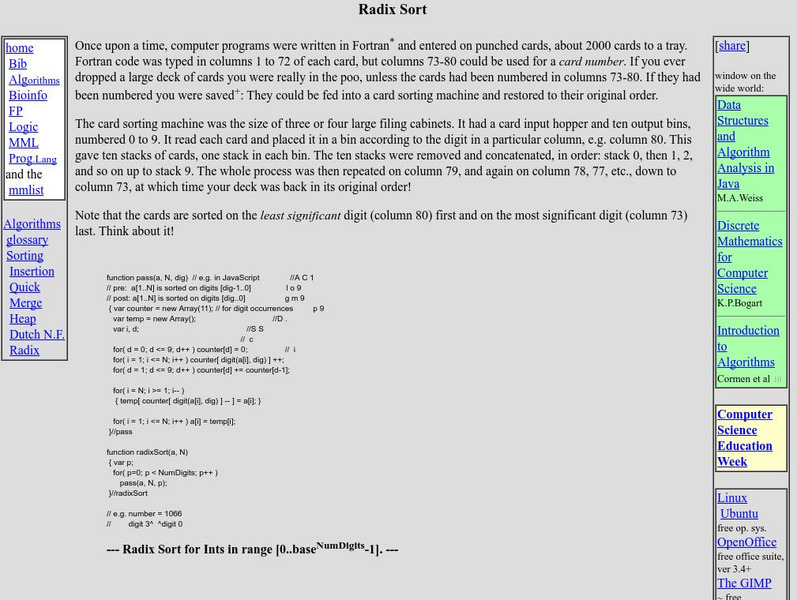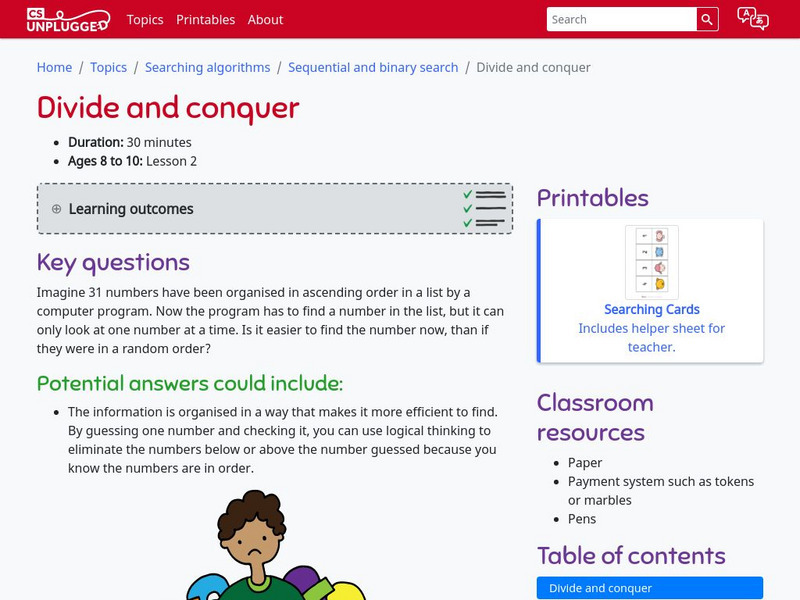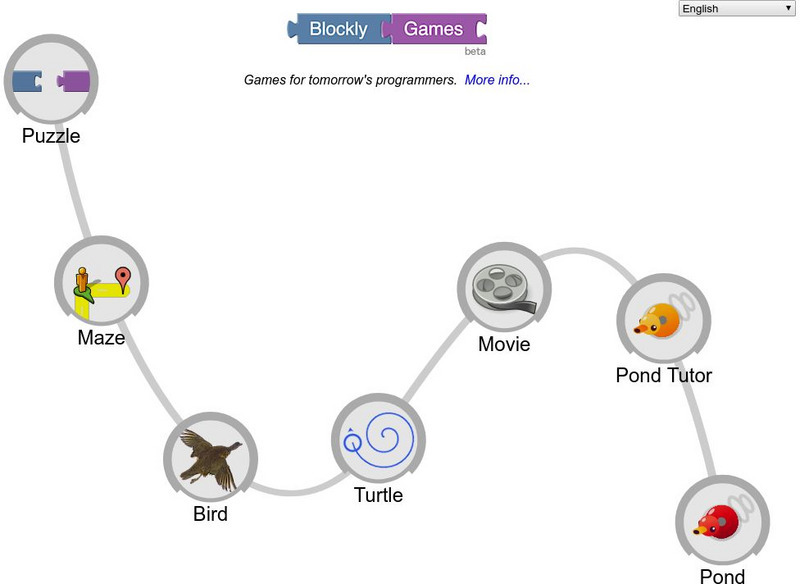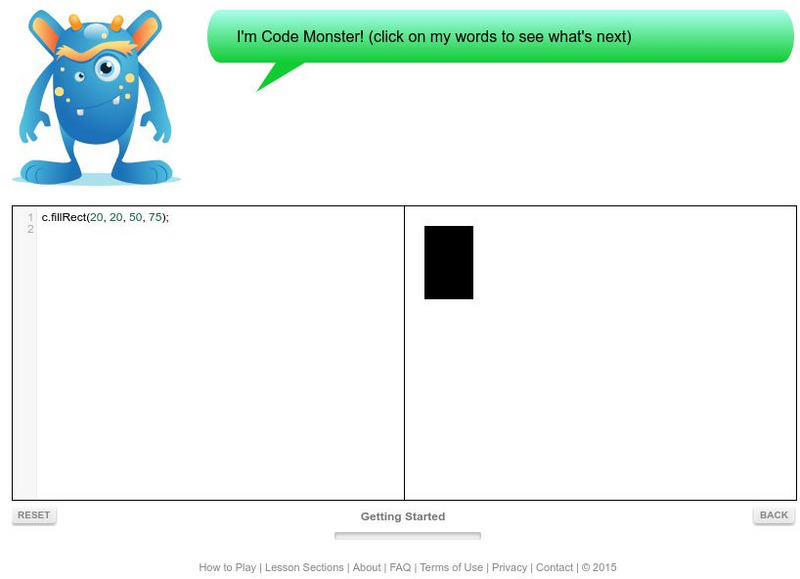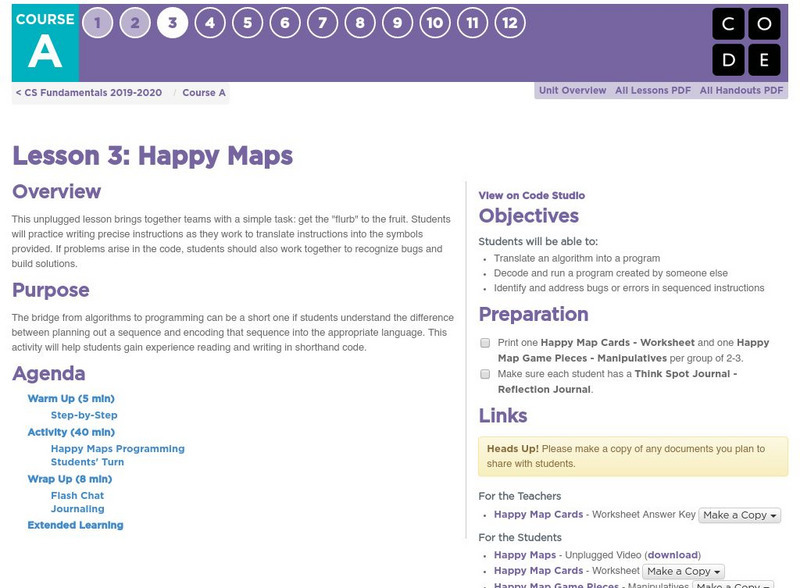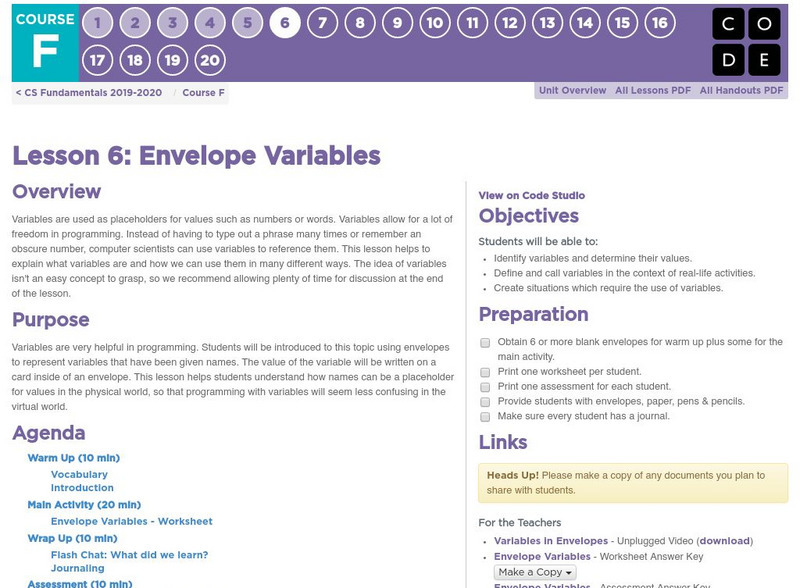TeachEngineering
Teach Engineering: Testing the Edges
Students gain experience using the software/systems (engineering) design process, specifically focusing on the testing phase. This problem-based learning activity uses the design process to solve open-ended challenges. In addition to...
Other
Ibm: Mastering Recursive Programming
A discussion of how to write a correct recursive algorithm. Numerous examples are given in several different programming languages.
Google
Cs Education at Google: Cs First: Gumball's Coding Adventure
Teaches basic computer science concepts using the programming language Scratch. In this activity, students use characters from Cartoon Network's "The Amazing World of Gumball" to create an animated story.
CK-12 Foundation
Ck 12: Anaerobic and Aerobic Respiration
[Free Registration/Login may be required to access all resource tools.] Do you know why oxygen is so important? Module provides a comparison of the advantages and disadvantages of aerobic and anaerobic respiration and discusses the role...
PBS
Pbs Learning Media: Where Do You Get Your Energy?
In this interactive activity adapted from the Exploratorium, students will explore how our cells harvest energy from food.
Google
Cs Education at Google: Cs First: Create Your Own Google Logo
A set of three activities where students learn how to use the programming language Scratch to create Google logos, including ones for Valentine's Day and one for Earth Day.
Code.org
Code.org: Cs Fundamentals: End of Course Project
This lesson plan provides students with space to create a project of their own design, using a step-by-step process that requires planning but also allows for broad creativity.
Khan Academy
Khan Academy: Expressing an Algorithm
Practice computer science problems expressing algorithms.
E-learning for Kids
E Learning for Kids: Math: Eiffel Tower: Patterns
Pierre lives in Paris near the Eiffel Tower. Join him to find out more about patterns.
University of Canterbury
Cs Unplugged: Divide and Conquer
Imagine 31 numbers have been organized in ascending order in a list by a computer program. Now the program has to find a number in the list, but it can only look at one number at a time. Is it easier to find the number now, than if they...
Code.org
Code Studio: Computer Programming: Course E
Start coding with algorithms, loops, conditionals, and events and then you'll move on functions. In the second part of this course, design and create a capstone project you can share with your friends and family.
Other
Google: Blockly Games
A series of educational games that teach programming to students. It is designed for children who have not had prior experience with computer programming. By the end of these games, players are ready to use conventional text-based...
Code.org
Code Studio: Computer Programming: Course F
Learn to use different kinds of loops, events, functions, and conditionals. Investigate different problem-solving techniques and discuss societal impacts of computing and the internet. In the second part of this course, design and create...
Other
Medialoot: How to Design an I Os 7 Inspired I Phone App Screen
Walk through the steps involved to create a thin, flat iOS 7- inspired design concept for a user profile app screen. By using these simple techniques create stunning, minimal app interfaces.
Other
Crunchzilla: Code Monster
An instructional program that shows students how to code using JavaScript. The Code Monster and his speech bubble are at the top of the screen where kids read straightforward explanations, commands, and questions. Code Monster is simple...
Code.org
Code.org: Cs Fundamentals: Happy Maps
The bridge from algorithms to programming can be a short one if students understand the difference between planning out a sequence and encoding that sequence into the appropriate language. This activity will help students gain experience...
Code.org
Code.org: Cs Fundamentals: Programming With Angry Birds
In this instructional activity, students will develop programming and debugging skills on a computer platform. The block-based format of these puzzles help students learn about sequence and concepts, without having to worry about...
Code.org
Code.org: Cs Fundamentals: Course D
Students develop their understanding of loops, conditionals, and events. Beyond coding, students learn about digital citizenship.
Code.org
Code.org: Cs Fundamentals: Lesson 9: Changing Variables With Artist
For this lesson, students will explore the creation of repetitive designs using variables in the Artist environment. Students will learn how variables can be used to make code easier to write and easier to read. After guided puzzles,...
Code.org
Code.org: Cs Fundamentals: Lesson 7: Variables With Artist
n this lesson, students will explore the creation of repetitive designs using variables in the Artist environment. Students will learn how variables can be used to make code easier to write and easier to read, even when the values don't...
Code.org
Code.org: Cs Fundamentals: Lesson 6: Envelope Variables
This lesson helps to explain what variables are and how we can use them in many different ways.
Code.org
Code.org: App Lab
App Lab is a programming environment where you can make simple apps. Design an app, code in JavaScript with either blocks or text, then share your app in seconds. Start with a blank project, explore the sample apps and take the challenge...
Other popular searches
- Cell Energy Atp
- Atp Aerobic Anaerobic
- Atp and Adp
- Atp Lecture
- Cell Function Atp
- Energy Atp
- Atp Cp
- Atp Cap
- Atp Synthase
- Atp Molecules
- Atp Adp
- Atp, Aerobic, Anaerobic

